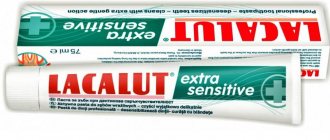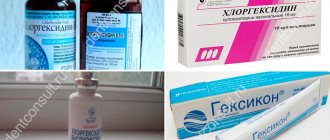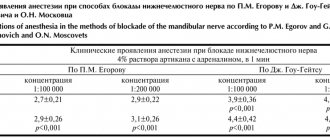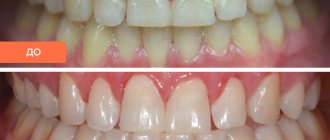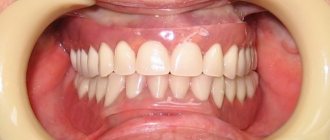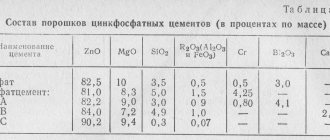Belak F is a one-component varnish containing fluorine. Its regular use reduces tooth sensitivity.
This drug also helps to increase the resistance of enamel to caries and is used to remineralize enamel.
Features of the composition
Belak F is produced in 2 types:
- white;
- transparent.
White varnish contains:
- solvent;
- film former;
- potassium fluoride.
The transparent version of the drug contains:
- film former of natural origin;
- new generation fluorine compound – aminofluoride;
- antiseptic;
- solvent.
Belak F is produced in a 25 ml dark glass bottle. The kit may also include applicators for application.
Clinical researches
ASEPTA series toothpastes are distinguished by clinically proven effectiveness:
- Clinical studies have proven that regular use of professional toothpaste ASEPTA REMINERALIZATION improved the condition of the enamel by 64% and reduced tooth sensitivity by 66% after just 4 weeks.
- Clinical studies have proven that regular use of professional toothpaste ASEPTA GENTLE WHITENING for a month allows you to lighten tooth enamel by 1.5 tones, increases anti-caries effectiveness by 3.4 times and increases enamel remineralization by 2.6 times.
Sources:
- Report on the determination/confirmation of the preventive properties of personal oral hygiene products “ASEPTA PLUS” Remineralization doctor-researcher A.A. Leontyev, head Department of Preventive Dentistry, Doctor of Medical Sciences, Professor S.B. Ulitovsky First St. Petersburg State Medical University named after. acad. I.P. Pavlova, Department of Preventive Dentistry
- Report on determining/confirming the preventive properties of toothpaste “ASEPTA PLUS” GENTLE WHITENING” Author: doctor-researcher A.A. Leontyev, head Department of Preventive Dentistry, Doctor of Medical Sciences, Professor S.B. Ulitovsky First St. Petersburg State Medical University named after. acad. I.P. Pavlova, Department of Preventive Dentistry
- Characteristics of hard dental tissues in chronic kidney disease: morphology, chemical composition, possibilities of remineralizing therapy Doctor of Medical Sciences, Prof. A.K. YORDANISHVILI [1—3], Ph.D. O.A. BELSKIKH [2], MD. O.L. PIKHUR [4] 1. Northwestern State Medical University named after. I.I. Mechnikova, St. Petersburg, Russia; 2. Military Medical Academy named after. CM. Kirova, St. Petersburg, Russia; 3. Medical and Social Institute, St. Petersburg, Russia 4. Institute of Bioregulation and Gerontology, St. Petersburg, Russia
Mechanism of action and therapeutic effect
The preventive effect of the varnish is based on the penetration of fluoride ions into the enamel hydroxyapatite crystals. At the same time, their solubility decreases. Fluorine becomes an integral element of the crystal lattice, thereby reducing the rate of demineralization processes and increasing remineralization.
Fluoride exposure lasts longer due to the addition of fluoride ions to calcium ions. The resulting substance fills all the pores and microchannels in the enamel where there is the highest probability of reducing its resistance.
In addition, the influence of microorganisms on the enamel is reduced. When fluorine-containing preparations are applied, they lose their ability to release acids when processing sugars.
The result of the cariesstatic effect of fluorine-based varnishes is a decrease in the intensity of carious processes in 60% of cases.
Increased tooth sensitivity occurs due to the fact that the enamel is worn away in one or more places on the tooth. As a result, the dentinal tubules become open, which causes discomfort.
The effect of fluoride varnish on such teeth is based on their covering with poorly soluble calcium and fluoride compounds. The crystals are deposited in the tubules and ensure their hermetically sealed.
Types of dental varnishes for teeth
Whitening cosmetic varnishes
Professional whitening, which is offered by dental clinics, has one drawback - high cost. But there are options on how to achieve the effect of a “Hollywood” smile at minimal cost. Teeth enamel whitening varnish will help with this.
It makes teeth white from the first application, brightening them by at least 10 shades and giving a glossy shine. Products from different manufacturers may differ in the degree of whiteness and duration of action, but on average, one coat of teeth with varnish is enough for a maximum of a day. The principle of action is similar to nail polishes: the teeth are temporarily stained and, as a result, become whiter.
After the composition dries, a white film coating forms on the teeth, which can be easily removed with a toothbrush if desired, but can also be easily removed along with solid foods and drinks. The effect of whitening varnish-paint does not affect your own enamel; it will not relieve tooth sensitivity, if any.
The coating can be applied to restorations: on fillings, veneers, and crowns, it will have the same properties as on regular teeth.
The composition of different teeth whitening varnishes may vary, but some components are present in all products:
- film former;
- coloring component.
With repeated use, such varnishes can lighten your own tooth enamel by several tones. Manufacturers assure that, in addition to coloring, such varnishes have a remineralizing effect due to a special additive (hydroxyapatite), that is, they help restore and strengthen tooth enamel. In addition, the film has antiseptic and bactericidal properties, thus, while present on the teeth, it protects them from cervical caries.
Main indications for the use of whitening varnish:
- pigment spots on enamel;
- darkening of enamel from tobacco, coloring foods and drinks;
- difference in color of fillings and crowns.
Teeth whitening varnishes are good as a temporary solution, for example, for photo shoots, special events or public appearances when you need to look perfect. Safety: whitening varnishes do not contain acetone and other chemically hazardous components, therefore they do not damage tooth enamel and mucous membranes, and do not cause discomfort during application and presence in the mouth.
Note that whitening varnishes are not effective for problems such as moderate and severe forms of fluorosis, enamel hypoplasia, severe chips: in this case, tooth defects cannot be masked with several layers of varnish. With such defects, only ceramic restoration can improve the aesthetics.
Fluoride varnishes
Fluoridation is a procedure that is performed in a dental office. Goes in combination with professional oral hygiene.
When areas of enamel demineralization appear on a tooth, it becomes sensitive: it reacts to cold, hot, acidic foods and drinks. Dentists use fluoride preparations that seal open dentinal tubules, eliminating increased sensitivity.
Problems that fluoride varnish solves:
- decreased enamel sensitivity;
- prevention of caries;
- preventing further development of caries when it is at the spot stage.
Unlike whitening varnishes, fluoride varnishes are absolutely transparent on the teeth and do not have a whitening effect, but due to the preliminary removal of soft and hard plaque from the teeth during professional hygiene, the enamel is slightly lightened. Fluoride varnish creates a colorless protective film on the tooth surface that prevents the harmful effects of bacteria.
Fluoride-containing preparations are not applied to crowns, veneers, or dentures. It is recommended to begin fluoridation procedures in childhood, from the moment the baby teeth erupt, as this will protect the rudiments of permanent teeth. Fluoridation is also carried out for pregnant women, since the drugs are safe and do not have a negative impact on the health of a woman expecting the birth of a child. Fluoridation is especially recommended after removal of braces and clinical whitening.
The composition of fluoride varnish includes:
- sodium fluoride;
- chloroform;
- shellac;
- ethanol;
- fir resin.
Many have heard about the dangers of fluoride, and we have already talked about the consequences of its excess in the body. Dentists agree that the use of toothpastes with fluoride at a certain concentration of this element has a bad effect on tooth enamel and on health in general, especially if there is an increased content of fluoride in drinking water in a given region. But the concentration of fluorides in fluoride varnish is very small and cannot harm dental health. Therefore, fluoridation is recommended for the population even in regions with high fluoride content in water.
Remineralizing varnishes for children
Children's dental varnishes for remineralization can be distinguished into a separate category. Varnishes for children's teeth are available in various flavors, so that the little patient has a pleasant impression of visiting the doctor, and he does not feel afraid of the necessary medical procedures. The products contain xelitol, which allows you to fight pathogenic bacteria in the oral cavity some time after application.
When can it be used?
The use of Belak F is recommended for:
- initial caries;
- prevention of dental caries in children and adolescents with low enamel resistance;
- wedge-shaped defects;
- increased sensitivity of teeth;
- traumatic damage to enamel;
- erosion on the tooth surface;
- increased tooth wear;
- initial stages of gum recession;
- carrying out professional oral hygiene.
Method of use
Stages of applying varnish:
- cleansing all tooth surfaces with a brush and toothpaste that does not contain fluoride;
- insulation of the working area with cotton rollers;
- drying the tooth with air;
- Using an applicator, the varnish is applied to the surface of the tooth and distributed evenly;
- after all the doctor’s manipulations, the patient should sit with his mouth open for 4-5 minutes until the drug dries completely;
- then all the videos are removed and recommendations are given.
The patient should not brush his teeth or eat solid food for 12 hours after applying the product. You should refuse water for 2 hours.
For preventive purposes, Belak F is recommended to be used 2-3 times a year. When treating caries, fluoride varnish is applied according to a certain course. The patient receives 3-4 applications every 3 days.
Before use, the bottle must be shaken to restore the homogeneity of the material.
The drug is stored in a bottle with a tightly closed lid in a cool place. Over time, delamination of the drug may occur, but this does not affect its performance.
Increased tooth sensitivity can cause very severe discomfort. In such a situation, Belak F becomes simply irreplaceable. It relieves all unpleasant sensations after the first use. Of course, existing enamel defects will not change in appearance, but they will become much less of a concern.
The only disadvantage of using varnish at home is the inconvenience of applying it. Drying the tooth surface completely is not an easy task. Saliva constantly flows and interferes with the use of the drug. But, if you get used to it, there should be no problems with use.
It is better to discuss the frequency of use with your dentist in advance to avoid overdose.
Instructions for use
First you need to remove plaque with toothpaste or tooth powder that does not contain fluoride. Or thoroughly clean the surfaces of the teeth with a brush and water.
- Isolate the gums from the working sides with cotton swabs so that Belak F fluoride varnish does not get on the oral mucosa.
- Dry your teeth with air to remove any remaining saliva or moisture.
- Using an applicator stick, apply and spread the product evenly.
- Do not close your mouth for 5-7 minutes until the medicine dries and forms a protective layer.
- After 12 hours, remove the film with a toothbrush dipped in water.
Belak F for teeth
The drug most commonly found in trade is white and transparent, but you can also find it in yellow. There is no significant difference in them, only in the ease of application, since yellow stands out due to its color and is easy to detect on the teeth, unlike colorless ones. Also included are applicators that are quite convenient to apply Belak F without touching the mucous membrane.
Cost and analogues
The price of Belak F is about 120-150 rubles per bottle.
You can find a large number of similar products on the dental materials market:
- Bifluorid 12, manufactured by VOCO;
- Fluoride varnish from Omega-Dent;
- Tooth Mousse gel from GC;
- manufacturer Vladmiva produces the drug in the form of Belagel gel;
- Fluocal from the manufacturer Septodont.

